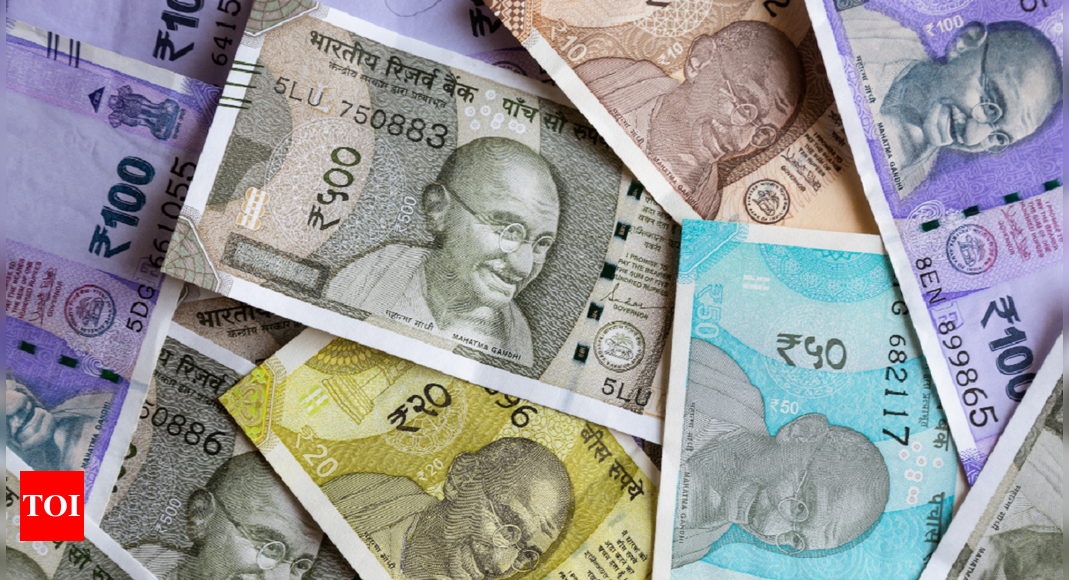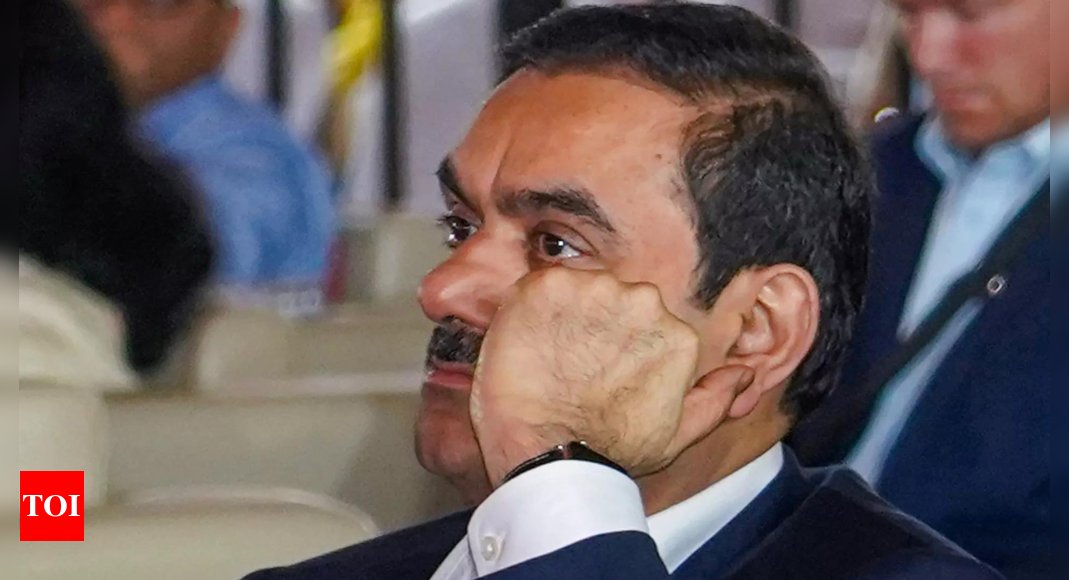

Stock market today: The Indian stock market witnessed a bloodbath on Wednesday, with the BSE Sensex closing at its lowest in over four months. In the last two days, the BSE 30 fell by 1,805.2 points, marking a 2.27 percent decrease.
Both India equity benchmark indices Sensex and Nifty dropped by over 1 percent on Wednesday due to extensive selling in banking, auto, and capital goods stocks, spurred by October’s retail inflation reaching a 14-month peak of 6.21 per cent and continued foreign fund withdrawals.
The BSE Sensex dropped 984.23 points or 1.25 per cent, closing at 77,690.95, continuing its downward trend from the previous session. During trading hours, it declined by 1,141.88 points or 1.45 per cent to 77,533.30.
The NSE Nifty continued its downward trend for the fifth consecutive session, declining by 324.40 points or 1.36 per cent to 23,559.05.
Investors lose Rs 13 lakh crore
The BSE benchmark witnessed a significant decline, causing equity investors to experience a loss of Rs 13 lakh crore in market value over two trading sessions.
The total market value of BSE-listed firms decreased by Rs 13,07,898.47 crore, settling at Rs 4,29,46,189.52 crore or $5.09 trillion over these two sessions.
Among the Sensex 30 pack, major declines were seen in Mahindra & Mahindra, Tata Steel, Adani Ports, JSW Steel, IndusInd Bank, Reliance Industries, HDFC Bank and Kotak Mahindra Bank. The gainers included Tata Motors, NTPC, Hindustan Unilever, Asian Paints and Infosys.
Market sentiment was affected by subdued quarterly results, selling pressure in key stocks like HDFC Bank and Reliance Industries, alongside negative trends in US and Asian markets, according to traders.
Key factors behind the decline:
1. Persistent FII selling, leading to record outflows
“Relentless selling by FIIs amid weak corporate earnings and a sharp surge in domestic inflation to a 14-month high have further impacted investor sentiment, dashing hopes for a near-term rate cut by the RBI,” said Vinod Nair, Head of Research, Geojit Financial Services.
“Nifty has experienced its first significant correction in terms of both time and price since March 2023. This sell-off was sparked by China’s new stimulus package, which has diverted FII flows from India to China. Additionally, weaker-than-expected Q2 earnings from Indian companies, particularly in the consumption sector, have further intensified FII selling, leading to record outflows from Indian equities over the past month and a half,” Santosh Meena, Head of Research at Swastika Investmart Ltd, said.
“Adding to these pressures are rising US bond yields and a strengthening dollar index, both of which pose challenges for emerging markets like India,” she added.
Foreign Institutional Investors (FIIs) sold equities valued at Rs 3,024.31 crore on Tuesday, as per exchange records. And FIIs sold equities worth Rs 2,306.88 crore, while domestic institutional investors (DIIs) bought shares worth Rs 2,026.63 crore on Monday.
The persistent selling by FPIs has resulted in cumulative outflows reaching Rs 23,911 crore in November.
2 . Retail inflation
Recent statistics indicate that retail inflation exceeded the Reserve Bank’s upper limit, reaching a 14-month peak of 6.21 per cent in October, primarily due to increasing food costs.
“With inflation once again rising sharply and breaching above the RBI’s comfort level, receding hopes of any major rate cuts in the near future by the central bank put the markets into a tizzy,” Prashanth Tapse, Senior VP (Research) at Mehta Equities Ltd, told news agency PTI.
“Also, relentless FII selling in local equities, along with rising US bond yields and dismal corporate earnings show has prompted overseas investors to park their funds in relatively cheaper markets like China,” he added.
3. Sectoral index ended lower
The most significant declines were observed in mid and small-cap shares, whilst financial and automotive sectors demonstrated considerable weakness. The BSE small cap index declined by 3.08 per cent, while the midcap index decreased by 2.56 per cent.
Every sectoral index concluded lower. Realty experienced the lowest fall at 3.23 per cent. This was followed by industrials at 2.95 per cent, capital goods at 2.72 per cent, services at 2.54 per cent, metal at 2.54 per cent, and commodities at 2.45 per cent.
On the BSE 30 pack, 3,299 shares registered declines, whilst 670 showed advances, and 98 remained static.
Also read: Sensex plunges over 950 points, Nifty settles at 23,559
4. Indian currency weakens
The Indian rupee showed minimal movement, gaining just 1 paisa to settle at 84.38 (provisional) versus the US dollar on the day. The currency faced pressure from continuous foreign fund outflows and subdued performance in domestic equity markets.
Currency dealers noted that whilst the US dollar’s strength in overseas markets affected sentiment, the Reserve Bank of India‘s (RBI) suspected market intervention provided support to the rupee at lower levels.
The rupee has been on a downward trend since Trump’s return, marking its all-time low of 84.40 against the US Dollar on Tuesday. It is expected to depreciate further by 8-10 percent.
The markets display uncertainty regarding future US policy decisions, including trade implications for the global economy, as evidenced by a strengthening US dollar and increasing bond yields, Nair said.
Also read: Swiggy’s stock settles at 456 on debut, up by 16.92% than issue price of 390
Asian markets showed mixed results, with Seoul, Tokyo and Hong Kong declining while Shanghai advanced. European markets traded positively while US markets closed lower on Tuesday. The global oil benchmark Brent crude increased by 0.93 per cent to $ 72.56 per barrel.
Earlier on Tuesday, the BSE benchmark declined by 820.97 points or 1.03 per cent to 78,675.18, while the Nifty fell by 257.85 points or 1.07 per cent to 23,883.45.







